#the story of a German pianist
Text
LGBT literature of the 1860s–1910s. Part 4
Well, it’s been a while. Here’s a new selection featuring three stories about love between students, lesbian poems, a comedy centered around a gay character, Proust's short story, and more
1. Bertram Cope’s Year, by Henry Blake Fuller (1919). Although this novel went unnoticed by its contemporaries, it is thought to be the first officially published American novel about homosexual men. It could be your perfect academia novel: Bertram, “no squire of dames”, is a self-conscious English teaching assistant at an Illinois university where he completes his thesis and tries to settle in life. Four women and three men are attracted to him, but Bertram is fond of “Dear Arthur”, his college friend Arthur Lemoyne who comes to live with him later. Interestingly, the story has a touch of comic and ironic, which was very rare for homosexual literature of that time.
[Read online]
2. Le Monsieur Aux Chrysanthèmes (The Gentleman of Chrysanthemums), by Armory (Carle Dauriac; 1908). This is the first modern play (and a society comedy at that) that has a gay man as its main character. The character is Gill Norvège, a critic and writer, who uses a young widow Marthe Bourdon to get money. Marthe is hopelessly in love with Gill and borrows 30,000 francs from a poet Jacques Romagne, who, in turn, is hopelessly in love with Marthe. And then Gill sees Jacques one day and falls in love with him.
[Read online in French or in English]
3. The Garden God: A Tale of Two Boys, by Forrest Reid (1905). Called “a classic of Uranian literature”, this story has it all: homoerotism, platonism, ancient gods and love at boarding school. In that school a fifteen years old Graham, who used to dream of friendship with a Greek god, meets Harold who looks exactly like that imaginary friend. But where there are gods there is also tragedy, so be prepared.
[Read online]
4. Poems by Sofia Parnok. Parnok was the first open lesbian in Russian literature. She was in a relationship with another famous Russian poet, Marina Tsvetaeva, as well as with some other women to whom she dedicated a number of poems. Often called the Russian Sappho, she often refers to Sappho in her poetry and also used her famous phrase, “Someone, I tell you, in another time will remember us”. Some of Parnok’s poems are translated and more is available in Russian.
5. Teleny, or The Reverse of the Medal (1893). Not the first, but one of the earliest examples of English-language homosexual erotic novels (though rather sophisticated), its author is unknown, but some believe that it was written by Oscar Wilde. Here we have a tragedy again, a tragic love between a Frenchman and a Hungarian pianist, to be exact. There’s also something literally queer going on, because the Frenchman, Des Grieux, has a telepathic connection with the attractive pianist, Teleny. Eventually they meet, and Teleny introduces Des Grieux to the underground homosexual world of Paris. Bonus: the novel has a comic adaptation, Teleny and Camille, by Jay Macy, and also a “prequel”, Des Grieux, written in 1899.
[Read online]
6. Anders als die Andern (Different from the Others), by Bill Forster (Hermann Breuer; 1904). The title is supposedly derived from a phrase that was popular among German gay men of that time, “We are, thank god, other than other people”. Herbert, the protagonist, falls in love with Ernst, the boy from his school. They go hiking together, and for some time they are close. But Ernst, although flattered by Herbert’s attention and feelings, rejects him twice, and it destroys Herbert’s life.
7. Avant la nuit (Before dark)by Marcel Proust (1893). A forgotten short story by Proust, written when he was only 22, despite what you might expect, tells about a lesbian woman. She is incredibly unhappy: she is in a relationship with a man, but wants to confess her true sexuality and suffers from her own dishonesty. Finally, she tells him the truth and asks for his compassion. In a way, this story defends homosexuality and explains why it cannot be condemned.
[Read online]
8. The Prussian Officer, by D. H. Lawrence (1914). Praised as a masterpiece of short fiction by some critics, this story is rather grim. A captain slowly becomes attracted to his young, simple orderly. However, he represses his feelings and, instead of showing any kind of affection, turns aggressive and humiliates the young man. And it is not going to end well.
[Read online]
9. Quelques Portraits-Sonnets de Femmes (Some Portrait-Sonnets of Women), by Natalie Clifford Barney (1900). One of the most famous lesbian poets of the 20th century, Barney wrote a chapbook of love poems to women that were so scandalous her father bought up all remaining copies and burned them. Two novels based on or about women’s affairs with Barney were also featured in previous chapters of this list. The book is not available online, but some poems can be found in English here and here.
10. The Intersexes: A History of Similisexualism as a Problem in Social Life, by Edward Prime-Stevenson (1906). Prime-Stevenson didn’t just write the first novel about gay men with a happy ending (featured in the previous part of the list), but also an interesting study, one of the earliest ones. Using science and history, he defenses homosexuality, which is why he is considered to be one of the first advocates for the rights of the LGBTQ community. A very progressive work for his time, it rejects the binary of masculine and feminine and insists that homosexuality is a natural result of human evolution.
[Read online]
P.s. Previous parts are collected here.
#lgbt literature#queer history#dark academia#lesbian literature#oscar wilde#russian literature#natalie clifford barney#marcel proust#lgbt history#gay literature#lesbian history#gay history#victorian era#blog: history#blog: literature
367 notes
·
View notes
Text

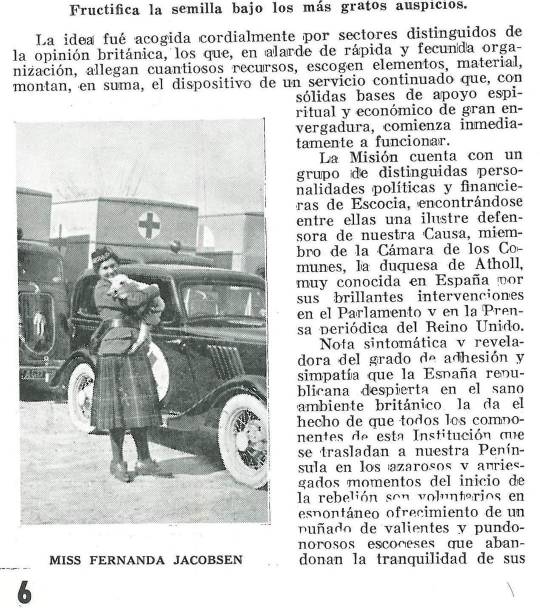
On April 10th 1936 Activists including the 'Red Duchess of Athol' formed a committee to send an ambulance to Spain in memory of three Dundonians killed while fighting for the Spanish Republican government.
A remarkable Scottish woman of principles.....
I’m using this wee bit of history to actually tell you about one of the woman in particular here, I will touch on the Ambulance story during the post, but in the main it’s about one remarkable lady
The Red Duchess, or Katherine “Kitty” Murray, the Duchess of Atholl, as she was formally known, was Scotland’s first female MP, The Red Duchess tag is a bit of a misnomer, as Kitty was a Tory politician, but beffore you judge her on this, please don’t hold that against her though, read the post and then judge her.
Kitty shook up parliament with her high principles and disregard for old school tribal politics, she joined the House of Commons in 1923 after winning the seat of Kinross and West Perthshire for the Conservatives. She also realised the threat Hitler posed and defied her party whips – reading Mein Kampf in the original German and giving translations to Chamberlain and Churchill to try to convince them of the imminent danger.
She was a woman full of contraries, before women had received the vote in 1918 she had outspokenly opposed giving them the vote, arguing that they were not yet sufficiently educated!
In the late 1920s her attention shifted to international issues. She supported a campaign to prevent female genital mutilation in the British colonies in East Africa and she became concerned over developments in the USSR: her book The Conscription of A People exposed and denounced Soviet forced-labour practices.
Her understanding of the dangers the Nazi’s posed influenced her support for the Spanish Republic after the failure of the attempted military coup in July 1936.
The U.S. journalist Louis Fischer gave this assessment of her;
“In her old-fashioned black silk dress that fell to her shoe tops she would sit on the platform, at Spain meetings, with Communists, left-wing socialists, working men and disabled International Brigaders and appeal for help for the Republicans. She would interrogate everybody who had been to Spain and hang on their words and note many of them in a book filled with her illegible scrawl.”
It was the ease with which she aligned to the communists fighting in the Spanish Civil War, that the Red Duchess name came about. It was much more than politics with Kitty though, she organised the evacuation of nearly 4,000 children from Bilbao and accommodated them in Britain.
It was Katherine Murray and another Scottish woman Fernanda Jacobsen who helped with humanitarian efforts during the war in Spain, Jacobsen became commandant of the Scottish Ambulance Unit (SAU) which provided humanitarian assistance in three convoys.. Jacobsen led the first unit of six ambulances and a lorry, with a crew of 19, which set out from Glasgow on 17 September 1936. Over the course of the war there were three such convoys, all led by Jacobsen.
The Red Duchess toured Scotland to raise support, stirring audiences into action with her spellbinding oratory, and visited Spain with Labour MP Ellen Wilkinson. The fruit of her journey was the enormously affecting book 'Searchlight on Spain', which sold 300,000 copies in Britain. The aristocrat's work demonstrated the social breadth of the Aid for Spain campaign in Scotland, and inspired women from all backgrounds.
While casting aside the politics of left and right, Atholl believed in the right for the Republicans to legitimately govern and defend themselves. The Duchess, who was also an accomplished pianist and composer, proved to be a heavy weight and fearless operator - but her name today remains relatively obscure.
It wasn’t all about Spain though, The Duchess, even before she had taken her seat in Westminster, had already reported on the dire state of health provision in the Highlands and Islands as part of the influential Dewar Committee, whose findings became the blueprint for the NHS in Scotland.
As I said earlier this was a woman of contraries and her opposeition of women’s suffrage at 21,led to Lady Astor, the first English female MP to take their seat in Westminster, derided her as “Canute trying to keep the waves back.”
Later, her position changed and the Duchess would befriend Sylvia Pankhurst who was to publicly endorse her as an independent candidate in the 1938 by-election which she triggered after losing the support of her local party over her views on Nazi Germany. At the time there was a widespread feeling of appeasement towards Hitler and his policies, Kitty Murray was a lost voice in her opposition to them. Such was her belief that she resigned her seat and stood as an independent, fighting almost entirely on this single issue.
A telegram from Stalin supporting the Duchess' campaign inflicted further damage to a campaign that was set against the vast resources of the Conservative Party. She lost the election by just 1,305 votes.
Her friend and campaign organiser Frieda Stewart said: “The challenge was one of principle against a whole party-political machine; and the Tories were determined that they were not going to be put in their place by one dissident individual, whatever her title.”
Murray, who authored several books, largely stepped away from the fray of public and political life following her defeat.
Following the death of her husband in 1942, she became Honorary Colonel of the Scottish Horse Regiment and also served as President of the Perthshire Branch of the Red Cross Society. Kitty Murray, the Duchess of Atholl spent spent a lot of her private income on assisting refugees. With the support of the Foreign Office she broadcast a message of support in the autumn of 1944 to the Poles resisting the Germans in Warsaw. She was also very concerned for those suffering at the hands of the Soviets. Just before the war ended, the Duchess of Atholl, chaired the British League for European Freedom, a post which she held up to her death in 1960.
Katherine “Kitty” Murray, the Duchess of Atholl died in Edinburgh in 1960, aged 85, after falling from a wall.
Read more about this all but forgotten woman here https://www.basquechildren.org/-/docs/articles/atholl2019
9 notes
·
View notes
Text
It's time to learn from Letters from Watson "What John Rance Had to Tell."
But first, Holmes explains some of his deductions. He does not explain what the long fingernails on the right hand mean.
And he comes out with what is for me, as a modern reader, a doozy:
The A [in RACHE], if you noticed, was printed somewhat after the German fashion. Now, a real German invariably prints in the Latin character, so that we may safely say that this was not written by one, but by a clumsy imitator who overdid his part. It was simply a ruse to divert inquiry into a wrong channel.
What? A German fashion of writing?
OKAY. It turns out that, prior to World War II, German was written in different scripts than other European languages, which the University of Wisconsin has documented for us because German immigrants continued to use them.
Here are a snipper of UW's examples of Kurrent and Sütterlin, as well as capital letters from Wikimedia's Fraktur.

The Fraktur A looks so much like a U that I can't believe Lestrade wouldn't have read the word as "ruche" and decided the victim was a dressmaker.
Calligrascapes gives examples of Spencerian (U.S.) and Copperplate (UK) handwriting of the late Victorian period here. Lower-case A looks almost the same as in Kurrent. I feel like our wall-scrawler must have used Sütterlin.
That our killer is familiar with a German A implies he either reads German comfortably or corresponds regularly with people of German ancestry. Since Holmes says "a real German" would use Latin letters (so he corresponds with Germans or visits Germany), killer is presumably familiar with a German-American community, which is certainly plausible if he's from Ohio (or Pennsylvania, or much of the Upper Midwest).
Whew.
Holmes' passing mention of going "to Halle's concert to see Norman Neruda" is about seeing Czech violinist Wilma Norman-Neruda perform at an occasion organized by Anglo-German pianist and conductor Sir Charles Hallé (also Norman-Neruda's future second husband).
Finally, we arrive at the home of Constable Rance. Last episode, it was given as Audley Court, Kennington Toll Gate. The latter part is a real place, the site of a toll gate that was demolished about 15 years before the time of the story. Here's an old photo shared by The Underground Map.

Today the site of the toll gate is a plaza with public art.
The "long succession of dingy streets and dreary by-ways" suggests the cab ride was to somewhere near the old toll gate site (possibly just west of St. Mark's Church, which is the tower in the background), rather than directly to the triangle of land where it sat. There's not a lot of space right there, due to Kennington Park, which has a long history as a public common and site of hangings.
I suspect any police constable trying to live in London today would sympathize with Rance's living in a "sordid dwelling." Rance also takes bribes.
Rance is, of course, astonished by Holmes' powers of deduction. But what was the "drunk" man singing? I was sure in my heart that "Columbine" was "Columbia" (an old-fangled term for the United States) and searching for that made it possible to cheat when I Heard of Sherlock's discussion of this matter came up in my search results. It's "Columbia, Gem of the Ocean." Here's an audio file.
“Had he a whip in his hand?”
Where on earth did a whip come from? We've no such wounds on the victim, and the killer came with him in a cab.
I might not have gone but for you, and so have missed the finest study I ever came across: a study in scarlet, eh? Why shouldn’t we use a little art jargon. There’s the scarlet thread of murder running through the colourless skein of life, and our duty is to unravel it, and isolate it, and expose every inch of it.
And... title drop! If this is the fates weaving the tapestry of life, surely it says something about Holmes that all the other threads are colorless besides murder.
13 notes
·
View notes
Photo

Those who have achieved all their aims probably set them too low.
- Herbert von Karajan
The Soprano Christa Ludwig described him as ‘Le bon Dieu’, while scores of musicians, reviewers and listeners have long regarded him as simply untouchable in the art of conducting. There was, however, much about Herbert von Karajan that was distinctly ungodlike. Ruthlessly ambitious as a young man and grimly autocratic in his later years, his life story is marked by bitter rivalries, feuds and, most notoriously, membership of the Nazi party.
But then, just listen to the results. It���s fascinating to look at the career, the controversy and the achievements of a conductor who still intrigues fans and detractors like no other musician long after his death.
The early career of Herbert von Karajan continues to be swathed in controversy.
Was he an ardent Nazi or an ambitious opportunist? If he was a zealous party member, should we revere his recordings as much as we do? To what extent should any moral accountability weigh against Karajan’s musical achievement? And how much latitude can we extend to people who have artistically given so generously?
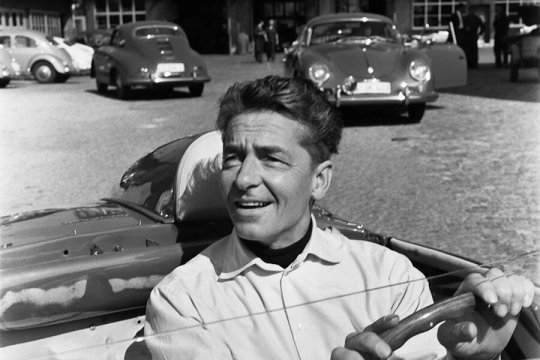
Karajan is not alone in occupying this uncomfortable situation during this era. Similar debate surrounds Richard Strauss, Carl Orff and Karl Böhm. Indeed, Wagner also evokes hostility in certain quarters with regard to his racial sentiments.
When Adolf Hitler swept to power in January 1933, the 24-year-old Austrian Herbert von Karajan had already notched up nearly four seasons as an up-and-coming opera conductor in the South German city of Ulm.
Born in Salzburg in 1908 into a prosperous family, he had demonstrated gifts as a pianist and conductor while studying in Vienna. After graduation, his debut orchestral concert with the Salzburg Mozarteum Orchestra in January 1929, featuring works by R Strauss, Mozart and Tchaikovsky, caused a local sensation and helped to secure him the contract in Ulm.
Karajan seized on the opportunity to learn his trade in Ulm and cut his teeth on much of the operatic repertory from Mozart and Beethoven to Puccini and R . Strauss, including the opera Schwanda der Dudelsacker by the Czech Jewish composer Jaromir Weinberger.
Yet, after the Nazi take-over, Karajan’s future wasn’t assured.
In early 1933, German operatic life was thrown into turmoil as the regime hounded out musicians that were deemed politically and racially unacceptable, and also pursued a protectionist policy to limit employment for non-Germans.
Against this context, Karajan’s decision to join the Nazi Party in Salzburg in April 1933 should be understood as an opportunistic move which was probably designed to safeguard his position at Ulm. Whether it also signalled enthusiasm for Nazi policy is open to speculation, though he no doubt hoped that the strong-arm methods of the Nazis would bring cultural stability to Germany.
Karajan retained his Ulm job for a further season, during which he expanded his repertory to include a praised account of Strauss’s opera Arabella. But in March 1934 he was fired for professional intrigue involving a potential Jewish rival.
He did not have to wait long for a new post. Three months later he was made general music director in Aachen.
Working in a larger theatre enabled Karajan to tackle more ambitious repertory, such as Wagner’s Ring cycle, Verdi’s Otello and Strauss’s Elektra. He also consolidated his reputation in the concert hall, taking charge of Aachen’s annual season of orchestral and choral concerts. One pre-condition for accepting was that he should re-apply for membership of the Nazi Party, his earlier membership in Salzburg having lapsed. This was confirmed in March 1935.

Although in his denazification trial in March 1946 Karajan argued that he had joined the Party to further his career, he could not escape his obligation as Aachen’s general music director to provide the musical background for political occasions.
On 29 June 1935 he took part in a huge open-air orchestral and choral concert that celebrated the NSDAP Party Day and at a similar ceremony four years later he conducted the close from Wagner’s Meistersinger. But his concert programmes seemed untainted by political interference – works by Debussy, Ravel, Kodály and Stravinsky rubbed shoulders with German ones. In 1938 he flouted the law by programming Dukas’s Sorcerer’s Apprentice. Party authorities must have overlooked that Dukas was of Jewish descent.
Karajan conducts Dvořák’s “New World” Symphony No. 9, performed by the Vienna Philharmonic Orchestra
By 1937 Karajan’s achievements in Aachen were attracting national interest.
In a special edition devoted to Germany’s conducting legacy, the journal Die Musik singled him out as a man who ‘can lead the new organisation of our cultural life in the spirit and direction which National Socialism demands’. Concert engagements in Gothenburg, Vienna, Amsterdam, Brussels and Stockholm helped to spread his name beyond Germany.
Yet for all this, Karajan set his sights even higher by hoping to make an impact in Berlin. This ambition was realised in 1938 with a ‘Strength through Joy’ concert with the Berlin Philharmonic and engagement as conductor at the Berlin State Opera in Wagner’s Tristan und Isolde in October of the same year.
Karajan may not have anticipated that with his move to Berlin he was stepping into a political cauldron over which he would have little control.
It began with a review of his Tristan which appeared in the Berliner Zeitung. Under the title ‘Karajan the Miracle’, the critic Edwin von der Nüll lavished praise on the performance suggesting that in conducting Wagner’s score from memory the 30-year-old conductor had achieved ‘something our great men in their fifties might envy’.
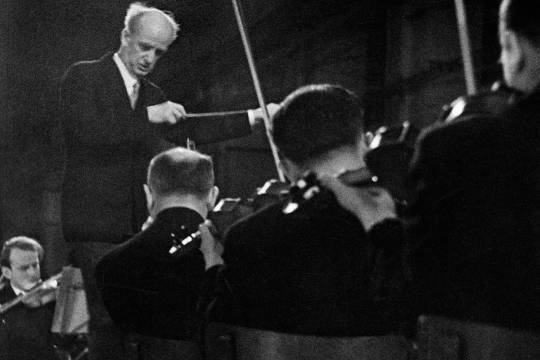
This was calculated to offend the conductor Wilhelm Furtwängler who had previously ruled the roost in the same theatre. Karajan was set up as a pawn in the struggle for control of Berlin’s cultural institutions between Propaganda Minister Joseph Goebbels, a Furtwängler supporter, and Minister of Interior Hermann Goering, the patron of the Berlin State Opera.
In June 1939 Karajan conducted Wagner’s Die Meistersinger at the State Opera without a score. The performance collapsed when the baritone, a drunk Rudolf Bockelmann, made a serious error. Alas Hitler, in the audience, was furious, blaming instead Karajan’s insufficiently Germanic approach to Wagner by conducting from memory.
Further problems arose over his marriage in 1942 to the quarter Jewish Anita Gütermann, technically against the law.
Yet, despite this and the continuing hostility and suspicion of Goebbels and Hitler and Furtwängler’s jealousy, his career prospered during the war. He conducted Bach’s B Minor Mass in Paris for the occupying German soldiers in 1940 and returned to the French capital in 1941 to present his performance of Tristan with the Berlin State Opera.
From 1940 he appeared in Italy and gave concerts in Romania and Hungary. A major achievement was to secure popularity for Orff’s Carmina Burana, a score that had aroused some hostility from the Nazi hierarchy at its first performance in 1937 before Karajan’s performances in Aachen and Berlin during the early 1940s.
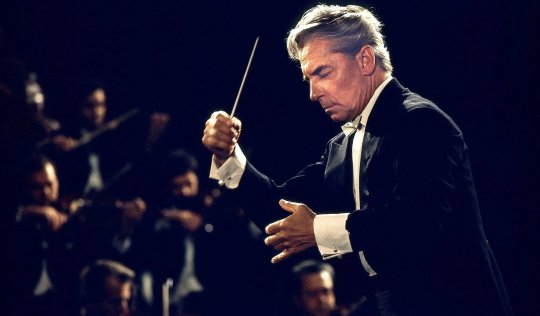
Driven by a fanatical love of music and a desire to advance his career, there’s little doubt that Karajan’s involvement with the Nazi regime was opportunistic.
Doubtless though there were also areas of Nazi policy that may well have chimed in with his own views. At the same time falling foul of the regime on occasions, his personal ideology can be best described as a montage of greys; nothing is ever clear-cut and nor perhaps should be our assessment of his work.
#karajan#herbert von karajan#quote#conductor#music#german#nazi germany#nazism#opera#orchestra#classical music#history#arts#culture
36 notes
·
View notes
Note
More of a suggestion if you wanna watch a Holocaust film that isnt so traumatic as Schindler's List or the Pianist, Life is Beautiful is actually a really good film on the subject even using the theme of "humor can get you through the worst"
I think I am vaguely aware of "Life is Beautiful".
I think a big problem behind movies that deal with the Holocaust is that there is a very fine line between accurate portrayal in a way I can emotionally handle, and a portrayal that sanitises the event to a degree where it becomes insulting (see: Boy in the Striped Pajamas).
I still find Maus to be the best balance in terms of fully giving a first hand account of the full horrors of surviving the Holocaust but due to the presentation of being both a book as well as the art giving just enough degree of separation where I don't feel like I want to die afterwards for a full month after finishing it.
It's difficult tho because I can never fully predict WHAT will trip up the little switch in my head which makes a WWII set story deeply traumatic for me to watch. I have never watched "Saving Private Ryan" but I have no interest in doing so. Because I watched History Buff's video on in and the clip of the kid lying on the Normandy beach crying for his mom bothered me so much I completely swore off ever watching the movie.
It's a really difficult balance and I try my best to listen to people's experiences with war films and how hard it hits, specifically around WWII (although not always. For instance I also have 0 interest in ever watching "Come and See" based on its reputation and I can't remember if that is WWII adjacent or if it's specifically the Belarusian war. Either way I know the movie's reputation and despite Mosfilms making it free on their youtube channel, I know I can't handle that one.)
I feel it's worth mentioning that when I was 16 we studied WWII in high school for a month or so, and our teacher had us watching recreation footage of the Nuremberg Trials which included real life footage taken by the Allies of the concentration camps. And when you're 16 that kind of imagery hits extremely hard and puts things into a much more realistic perspective. (also pretty sure I read Maus for the first time when I was 16 as well but I can't fully recall)
Although in all honesty, most historically accurate films upset me greatly depending on the subject matter. Weirdly enough, I do better with documentaries revolving around these types of subjects than I do film. It's probably something to do with emotional separation which documentaries tend to have versus film which specifically design themselves for emotional response.
Anyway I'm rambling.
I think I have had enough exposure to the Holocaust in narrative media where I would rather stick with watching documentaries about the subject matter I haven't watched before, and just sticking to re-reading Maus and similar accounts in book form. Rather than watch narrative movies about the subject itself.
That being said tho, apparently there's a 4 part miniseries from 1978 called "Holocaust" which, after being released in Germany, was so affecting that during the discussion panel that ran after each episode had German citizens phoning in either enraged saying the show was purely fiction and nothing of the sort happened, or in contrast, SEVERAL German citizens phoning in to confess how in 1938 they participated in Kristallnacht. I might be able to watch that one. And although it is about fictional characters (for the most part) I also need to finish Osamu Tezuka's "Adolf" which I stopped halfway due to how upsetting it was. As well as continue my man Shigeru Mizuki's manga "Showa" which I also stopped reading for a short time to take a break from the events at the start of the series (I haven't even gotten to WWII in that manga series yet. So I don't know if he covers the holocaust specifically as he is writing pure from a Japanese point of view).
Anyway my point is, I am very careful with my exposure just because I have severely upset myself in the past regarding this subject matter. So I'm always trying to find methods to learn more about the subject matter from accurate sources in a way where I won't severely cause lasting emotional damage to myself. But because of that I tend to avoid films and rather seek it out elsewhere.
7 notes
·
View notes
Text
Mary Astor - The Cameo Girl

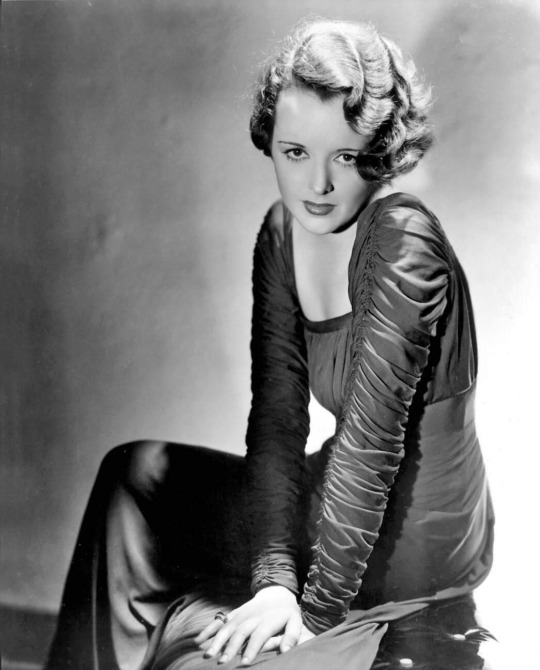


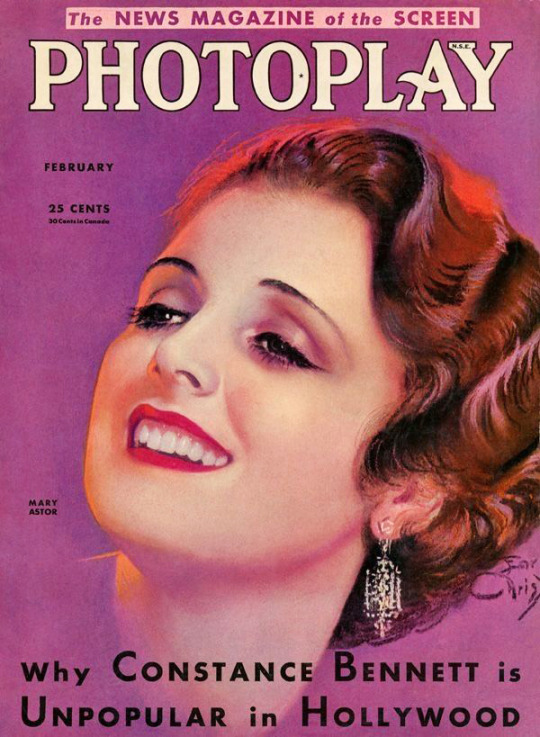
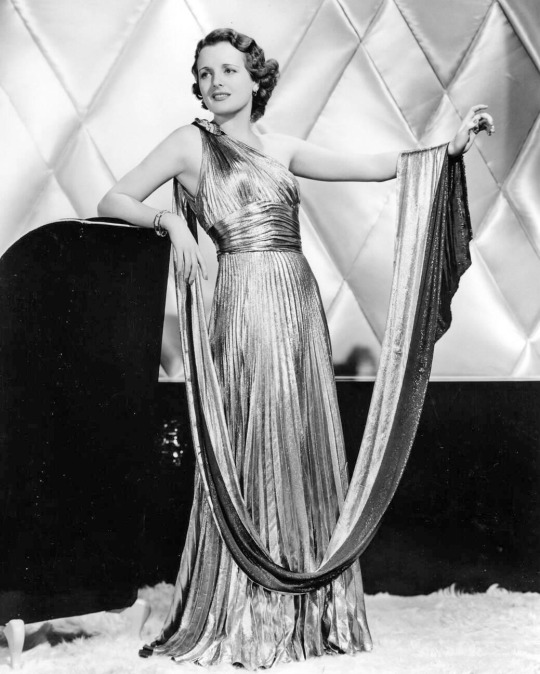
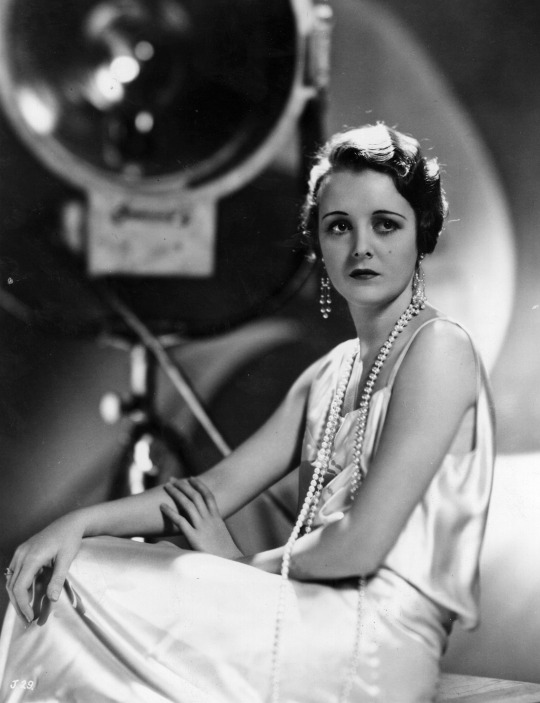




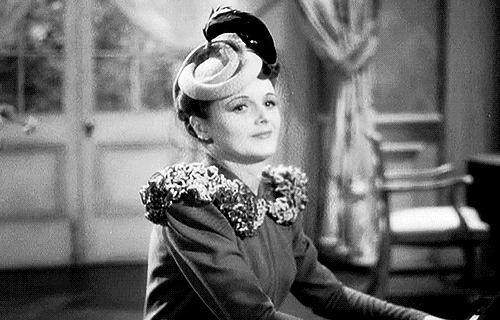
Mary Astor (born Lucile Vasconcellos Langhanke in Quincy, Illinois on May 3, 1906 – September 25, 1987) was an American actress of German and Portuguese ethnicity. Noted for her classic beauty and a renowned profile that earned her the nickname “The Cameo Girl.”
Recognizing her beauty, her parents pushed her into various beauty contests. Luck arrived when she became a runner-up in one of Motion Picture Magazine's photography contests and came to the attention of Harry Durant of Famous Players–Lasky, who signed her when she was 14.
Astor was a contract player first with Paramount, then Warner Bros., and finally Metro-Goldwyn-Mayer and worked in film, television, and on stage until her retirement in 1964. She also had a respectable career as a writer. Her 1959 autobiography Mary Astor: My Story was one of the first confessional autobiographies to come out of Hollywood.
Although her career spanned over four decades, she is best remembered for her performance as Brigid O'Shaughnessy in The Maltese Falcon (1941) and concert pianist Sandra Kovak in The Great Lie (1941).
After here retirement in 1964, Astor lived the final years of her life as a resident of the Motion Picture Country House in Woodland Hills, Los Angeles where she succumbed to the effects of respiratory failure due to pulmonary emphysema at the age of 81.
Legacy:
Chosen as one of the WAMPAS Baby Stars in 1926
Won the Academy Award for Best Supporting Actress in 1941
Authored two best-selling books of memoirs, Mary Astor: My Story (1959) and A Life on Film (1971) as well as five fictional novels.
Has had a star on the Hollywood Walk of Fame at 6701 Hollywood Boulevard since 1960.

#Mary Astor#The Cameo Girl#The Maltese Falcon#Silent Films#Silent Movies#Silent Era#Silent Film Stars#Golden Age of Hollywood#Classic Hollywood#Film Classics#Classic Films#Old Hollywood#Vintage Hollywood#Hollywood#Movie Star#Hollywood Walk of Fame#Walk of Fame#Movie Legends#Actress#hollywood actresses#hollywood icons#hollywood legend#movie stars#1900s
2 notes
·
View notes
Text
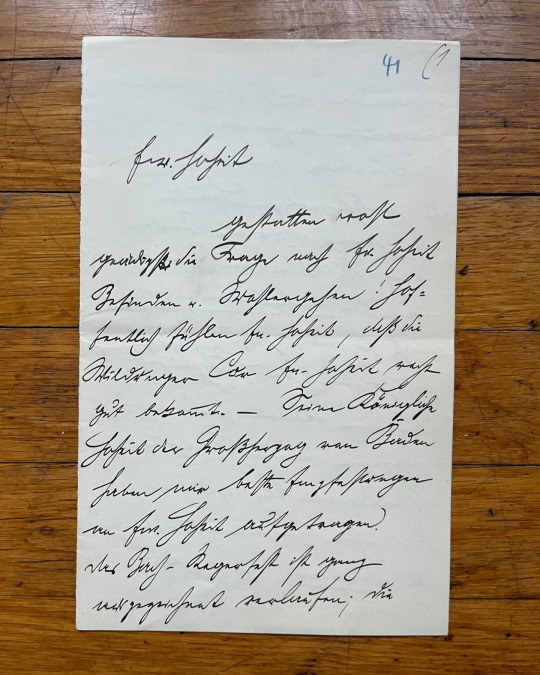


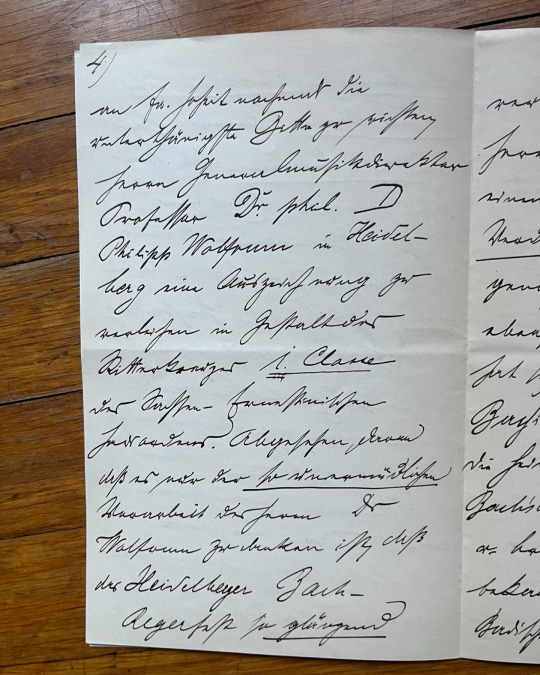


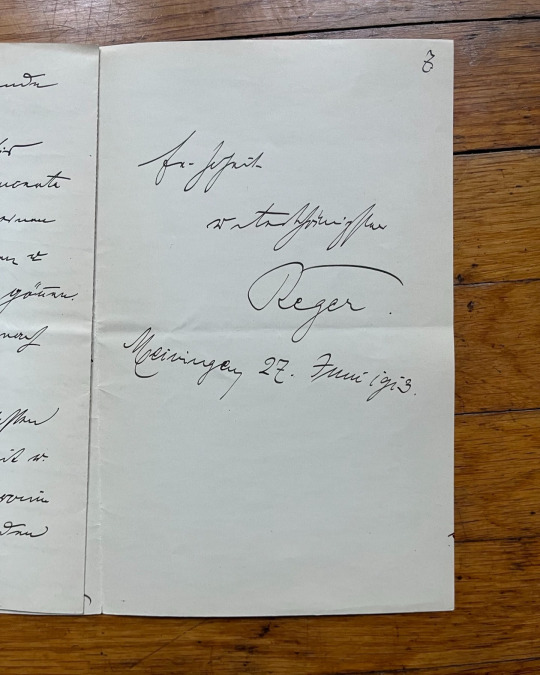

OTD in Music History: Composer, conductor, pianist, organist, and pedagogue Max Reger (1873 - 1916) was born 150 years ago in Bavaria.
As the central figure of the so-called "Back to Bach" movement that gained steam in the late 19th and early 20th Centuries, Reger represents a rather strange case: Many modern day "classical" music fans -- if they are familiar with him at all -- deride him as something of an aesthetic monster; the prototypically tasteless late-Romantic composer of swollen orchestral scores filled with long and pointless fugues on stylistically unsuitable subjects (like his gargantuan "Mozart Variations").
But Reger was actually a remarkably prolific composer, and a good deal of his original music -- which includes beautiful chamber works, charming piano miniatures, profound solo organ music, artful lieder, and daring unaccompanied violin sonatas -- is entirely devoid of the heavy-handed counterpoint which has given him a bad reputation in certain circles.
Arnold Schoenberg (1874 - 1951), for one, was extremely impressed by Reger the composer. Schoenberg summed up his thoughts in a 1922 letter that he sent to his friend and colleague, Alexander von Zemlinsky (1871 - 1942):
"Reger must, in my view, be played often: 1. because he has written a lot, and 2. because he is already dead and yet people are still not clear about him (I consider him to be a genius)."
One story about Reger has achieved a special scatological immortality within certain "classical" music circles:
Reger had a very acrimonious relationship with Rudolf Louis, a German music critic who absolutely despised his work. After Louis published a particularly scathing review of Reger's "Sinfonietta in A Major" (Op. 90), Reger responded with a curt letter which read as follows:
"Ich sitze in dem kleinsten Zimmer in meinem Hause. Ich habe Ihre Kritik vor mir. Im nächsten Augenblick wird sie hinter mir sein!" ("I am sitting in the smallest room of my house. I have your review before me. In a moment, it shall be behind me!").
What more is there to say?
PICTURED: A lengthy six page autograph letter that Reger wrote to a friend in 1913, discussing various musical matters.
Although in his own day he was often viewed with suspicion as one of the "dissonant ultramodernists" (a fact which is almost hard to believe now), as former New York Times Chief Music Critic Harold C. Schonberg (no relation to Arnold) explained:
"Reger himself thought of his music as a continuation of the German tradition. He also claimed that his music was written in the spirit of Bach and Beethoven. 'I can say with good conscience,' he wrote in 1914, 'that of all living composers, I am probably the one who is closest in touch with the great masters of our rich past.' The music of his own day, composed by epigones of Wagner and Strauss, he called 'perverted rubbish'… [and yet at the same time,] Reger himself felt an affinity to [Arnold] Schoenberg. Indeed, he once told the violinist Adolf Busch that of all of the then-modern composers, he felt closest Schoenberg. Likewise, scattered throughout Schoenberg's writings are references to Reger that make it clear that Schoenberg put him on as high a plane as Gustav Mahler and Richard Strauss…”
Perhaps it shouldn’t be surprising that a mutual fan club existed between Schoenberg and Reger -- after all, despite his own fearsome reputation as a "dissonant ultramodernist" (a reputation which, unlike Reger’s, persists to this day) Schoenberg also cut his compositional teeth working well within the lush Post-Romantic idiom (ex: "Verklarte Nachte")… and he too always proudly claimed an artistic lineage that extended straight back to Brahms, Beethoven, and Bach…
#Max Reger#Reger#Composer#classical composer#conductor#Conducting#pianist#piano#classical pianist#organist#classical music#organ#pedagogue#music teacher#teacher#music history#academic teacher#Violin Sonata#Sonata#Sechs Lieder#Zwölf Stücke#Gesang der Verklärten#Der 100. Psalm#Geistliche Gesänge#Die Nonnen#Piano Concerto#Die Weihe der Nacht#Eine romantische Suite#Variations and Fugue on a Theme by Mozart#Requiem
8 notes
·
View notes
Text

The Good German Officer
Saved the Pianist
Wilhelm Adalbert Hosenfeld was born in Hesse, Germany in 1895 to a pious Catholic family. Charitable activities were a big part of his childhood. He joined the Wandervogel movement, a German wilderness youth group that was a precursor to the hippie movement (Wandervogel was outlawed by Hitler in 1933.) Wilm fought for Germany during World War I and was severely wounded in action. He received the Iron Cross Second Class.
After the war, Wilm got married in a traditional Catholic ceremony and he and his wife, Annemarie, had five children. The family settled in Hunfeld and Wilm worked as a schoolteacher. Annemarie was a pacifist and peace activist who influenced him enormously. In 1939, when Wilm was 44 years old, Wilm was drafted by Hitler into the Wehrmacht, the German army. Stationed in Poland, he oversaw the building and running of a POW camp. He was moved throughout Poland and finally, in July 1940, where he stayed for the remainder of the war. Wilm had an interesting assignment: he was in charge of sports events at the Warsaw Army Stadium.
In the 1930’s, Wilm joined the Nazi party, convinced that nationalist policy was the best for Germany. But once he arrived in Poland in 1940 and saw the brutality, he quickly became disillusioned. He read Mein Kampf and was shocked to learn the truth about Hitler’s ideology.
He was horrified at how his countrymen were treating Poles and Jews. Being German, once a source of pride, felt like an embarrassment. Wilm looked for ways he could be helpful to the victims of his own army’s persecution. The first Jew saved by Wilm was Leon Warm, who’d escaped from a train headed to death camp Treblinka. Wilm procured false identity documents for Warm, and gave him a job in the sports stadium. One day Wilm was riding his bike through the Polish countryside when he saw a pregnant young Jewish woman running in great agitation. He followed and learned that her husband was in a concentration camp. She begged him for help, and he wrote down her husband’s name and promised that he would be home in three days. Nobody knows exactly what transpired, but Wilm kept his promise. Another time, he learned that the brother-in-law of a priest who was active in the Polish resistance was being taken to an extermination camp. Wilm located the truck, flagged it down, and told the S.S. officer that he needed a man for his labor crew. He “randomly” selected the priest’s brother-in-law, saving his life.
After the Warsaw Ghetto uprising in 1943 was brutally suppressed by the Nazis, Wilm wrote “… these animals. With horrible mass murder of the Jews we have lost this war. We have brought an eternal curse upon ourselves and will be forever covered with shame. We have no right for compassion or mercy; we all have a share in the guilt.”
A year after the ghetto uprising was the Warsaw uprising, a well-organized attempt by the Polish resistance to liberate Warsaw from the German occupation. This uprising also was quashed, and all Poles were kicked out of the city. As a German officer, Wilm stayed in Warsaw and encountered an unexpected survivor of the uprising. Wladyslaw Szpillman was a well-known Jewish pianist whose entire family had been deported to Treblinka. Wladyslaw avoided the same fate when the police officer overseeing deportations recognized him and allowed him to escape. The musician took shelter in the bombed-out shell of a building in Warsaw, trying desperately to cling to life despite the lack of food and heat. In November 1944, Wilm encountered Wladyslaw near death and provided the pianist with food, supplies, and safety from arrest. Wilm saved Wladyslaw’s life, enabling the composer’s prolific career composing and performing until his death in 2000 at age 88. Wladyslaw’s story, and Wilm’s crucial role in it, were dramatized in the acclaimed film “The Pianist.”
When the war ended, Wladyslaw was one of only twenty Jews left in Warsaw (before the war, 375,000 Jews lived there, 30% of the population.) Wilm surrendered to the Soviets along with the men he was commanding. Despite his renunciation of Nazism and heroic actions, the Soviets convicted him of war crimes for being a German officer, and sentenced him to 25 years of hard labor. In 1946 he wrote to his wife, begging her to track down the Jews he’d saved and ask them to testify on his behalf. She was able to find Wladyslaw and he agreed to help but unfortunately it did no good. Tragically, Wilm Hosenfeld died in a Soviet POW camp on August 13, 1952 having suffered a ruptured thoracic aorta. Wolf Biermann wrote about Wilm’s sad death: “He had been tortured in captivity… he then suffered several cerebral strokes. By the end he was in a confused state of mind, a beaten child who does not understand the blows. He died with his spirit utterly broken.”
After Wilm’s death, the Szpilman and Warm families advocated for decades for him to be honored as Righteous Among the Nations, and Wilm Hosenfeld finally received that designation in 2008, His children proudly accepted the award on his behalf.
For following his conscience rather than unjust orders and saving lives, we honor Wilm Hosenfeld as this week’s Thursday Hero.
Accidental Talmudist
32 notes
·
View notes
Note
for the ask game:
Top 5 works Adrien Brody has been in (movies and/or tv shows)?
Is that an upcoming Jack Driscoll story I spy on your masterlist btw?👀
The Grand Budapest Hotel
Recently surpassed Fight Club as my favourite film of all time, and is also one of my go-to comforts! I absolutely adore Wes Anderson's films and his characters and this one is simply his best in my mind. Also my introduction to Adrien! I could go on about this and Darjeeling way too much so that's all I'll say about it lol.
2. The Darjeeling Limited
Another favourite film? Check. Wes Andy? Check. Comfort film? Check. Maybe there's a bit of bias here because Adrien is constantly on screen, but I'm so enamored by this film, its visuals, and its soundtrack. The character development in this is fantastic and there are subtle things that I pick up on every time I watch it.
3. The Pianist
It almost feels wrong to not have this as #1. This movie is a work of art and it hit me so hard but in a good way. It's also what inspired me to pick up piano again; I am still in awe of how Adrien managed to learn to play Chopin so beautifully in the time he had. The scenes that especially struck me were the times when he pretended to play or wanted to play but he couldn't because he had to hide from the German soldiers. I really connected with those scenes since music is so important to me.
4. Detachment
This could honestly be interchangeable with Peaky in its placement on this list. This film also struck me in such a sad but beautiful way. It touches on a lot of real world problems but not in an obnoxious way -- rather, I found, in a kind of soothing way. The story with the girl he helps is so touching and also as a lover of Edgar Allan Poe that final scene was perfect and it haunts me. I could listen to Adrien read his work all day.
5. Peaky Blinders
I was actually a bit thrown including TV shows because if it were films I'd easily be able to let King Kong take this spot (I have thought about this list before, lol.). But I have to include Peaky. The writing of the characters and the cinematography and just the whole atmosphere of the show is top tier. My main incentive to watch it was being down bad for Adrien and I guess it payed off. I've met some really awesome people in the fandom so that also contributes.
And yes, I have a rough idea and OC for a Jack Driscoll story! I'm just not sure when I'll start it as I have other WIPs I will likely be writing first.
Thank you so much for the ask!
8 notes
·
View notes
Text
" The Pianist "
Directed by Roman Polanski
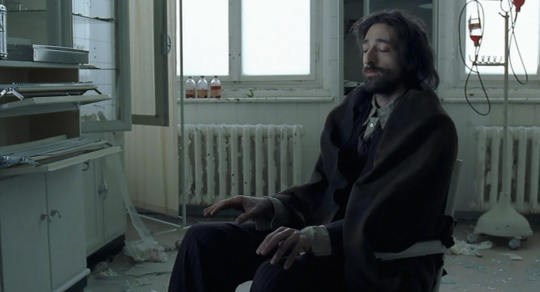
The Pianist is a movie that tells about the man and his passion in playing piano amidst the occuring war between the German and the Jews. It's a 2002 movie directed by Roman Polanski. The movie was set back in the year 1939-1945 when the World War ll started in the county of Poland. Adrien Brody played the life of Wladyslaw Szpilman, a Polish Jewish radio pianist who survived the deadly hollow of war following their freedom from the Nazis. Wladyslaw together with his family finds ways to escape and to survive without having enough water and food to eat. While they where forced to leave Warsaw and transfered to Ghetto, where they left to die, and only Wladyslaw, who was separated from his family at that time was alive, while his family was one of the victims.
Life in the war was not easy, he witnessed how it affected the people especially the children. During the war, foods was limited, and so was freedom. They lost the freedom to speak, the freedom to dream, as well as the freedom to live. Many children lost their families, their homes, and most importantly, their lives and the childhood they were trying to build.

What I like in this movie is the emotion that it gives to the audience. It able to capture its viewers' attention with its great cinematography. I love how the starting point of the movie shows the main problem of the story, where you can see Wladyslaw playing piano when a bomb struck the building he was in.
The movie wasn't just about the war and its destructions; it was also about the broken future of the children as well as the ruined dreams of many. It doesn't centered to the political conflict but it focused to a pianist's shattered life through the years of survival and how life changed before he blinks. It shows how war changes everything, how it ruined the people, and how war makes the world more cruel as it is.

Special thanks and big credits to Adrien Brody, who is able to portray the life of the great pianist Wladyslaw Szpilman. He carried the emotions so well that every scenes leaves a mark to our memory. Adrien truly deserves the award that he got in the Academy Awards, the youngest to do so in the category.
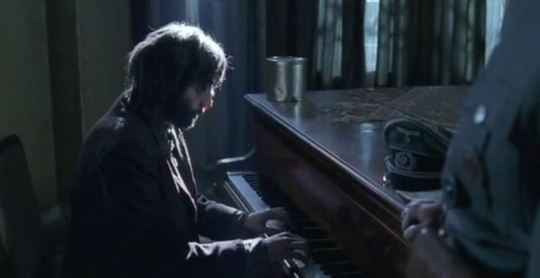

8 notes
·
View notes
Photo

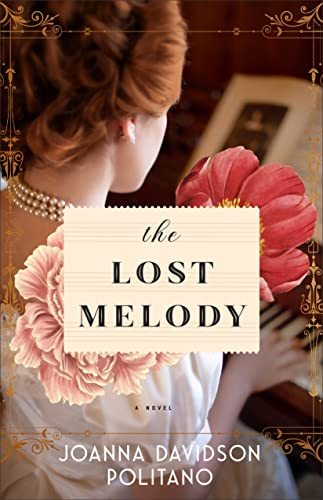





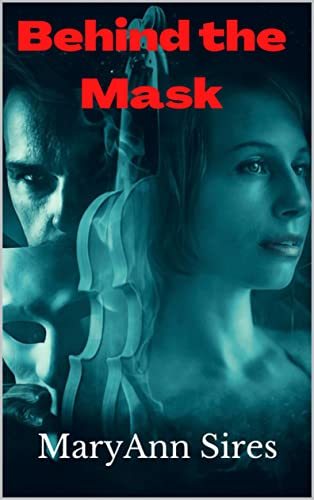


We have a bumper crop of new Phantom literature as we race into summer!
Patricia Peacock und das Phantom in der Oper by Tiffany Crockham is a German-language mystery about a crime-solving duo in period times who are stuck trying to protect a famous Italian diva at the Cairo Opera House who is being ruthlessly targeted, along with the rest of the ensemble, by a mysterious figure haunting the place.
The Voyeur of the Opera: Captive in His Lair by Dulcinea Drakos is a sultry retelling of the original story, with plenty of sex scenes and a focus on which of her two lovers Christine will choose in the end.
Not Alone by A.L. Flagg is a flipped-roles modern-day story in which a young woman named Eden is attacked, leaving her severely scarred and hiding from the world, until she falls in love with a newcomer and must decide whether she can come out of isolation and how to deal with the world that hurt her in the first place. (I’d call it a bit more of a Beauty & the Beast story, but like many publishers, this one claims it’s a “fusion” of that story with the Phantom one.)
Chandelier by Michael Leon is the sequel to his previous book, Phantoms, and carries on the story after Erik’s escape from the opera house, moving to the future of the 22nd century where an aging diva hides secrets from other performers and a young pianist is frightened by the sudden and incredible increase of his peformance skills.
The Phantom of Nob Hill Theater by John Luke Maxwell is a gay romance novel about a retired porn actor, the community theater performance he’s involved in, and someone behind the scenes trying to Stop the Show and/or kill the performers. Of course, it’s very sexy. It’s literally in the theater’s name.
The Lost Melody by Joanna Davidson Politano is a period story about a young pianist who, when her parents die, discovers a strange connection to a woman currently being held in an asylum and struggles with strange letters and unearthly music that seem to follow her everywhere she goes.
In Too Deep by Elaine Runmore is a period rewrite of the original story, in which Christina is a street busker singing for coins in an English port and is being followed by a mysterious dark figure in the shadows who would do anything to hear her voice...
Behind the Mask by MaryAnn Sires is a prequel to her long-running The Phantom’s Lady series, although the prerelease announcement doesn’t give us much to go on as far as what it’s about. We can probably safely guess it’s at least got some backstory for the Phantom and the other main characters, though!
Corruption by Jenika Snow is a modern-day version of the story in which the Phantom character is a hired killer for the Russian mafia and struggles with his love for the innocent young ballerina he knew in childhood, only to kidnap her and keep her hostage when he realizes that she is about to marry someone else.
A Dance with Danger by Marisa Wright is the story of a ballet dancer who, after his legs are crushed and he loses the ability to dance or walk, hides from the rest of the world, only to be dragged back into the light when he meets his brother’s beautiful ballerina fiancee and a power struggle begins to determine which of the brothers she will choose.
We also have three “maybe” options this week, for those who like to intrepidly find out exactly how much Phantom influence there is in a suspicious work:
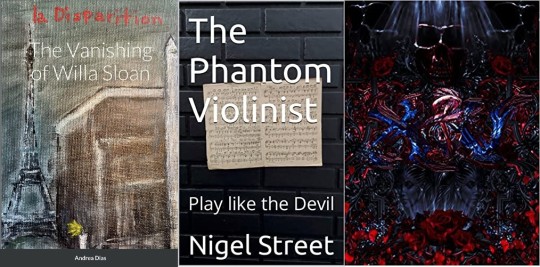
The Vanishing of Willa Sloan by Andrea Dias is a modern-day story about a girl whose mother vanishes during the COVID-19 pandemic, causing her to search for her until she discovers that her mother’s past as a ballerina in Paris was far from idyllic and that only traveling to Paris will allow her to finally learn the truth.
The Phantom Violinist: Play Like the Devil by Nigel Street has a lot of classic Phantom elements: a haunted, possibly evil violin that plays unbelievable music, a performer who isn’t sure whether their talent is their own or from some outside force, and of course dangerous performances that spiral out of control. However, it’s hard to tell if this is just one of those works that riffs on other evil violin stories (like Lovecraft’s Erich Zann) or whether it actually has a connection to the Phantom’s original story or one of its successors (the 1989 Little/Englund film would make sense...).
Ximphonic Versus: Symphony of the Phantom Knight by Scotlynd Xing Xin-Bedford is... well, to be honest, it’s very hard to tell what it is? It’s set five thousand years in the past in a fantasy universe in which a prince named Addonnis, a superlative singer, travels around with his mentor Concerto only to discover other ambitions when he encounters the princess of the faraway glass kingdom. It’s got a lot of music, haunting, and other Phantom-esque elements, but it offers no previews and I have no earthly clue what else is going on, so good luck to those who find out!
That’s it for this time, but let’s hope June’s offerings are just as exciting!
#phantom of the opera#the phantom library#new phantom releases#elaine runmore#tiffany crockham#dulcinea drakos#michael leon#john luke maxwell#al flagg#joanna davidson politano#maryann sires#jenika snow#marisa wright
36 notes
·
View notes
Text
Character Introductions
Johann Richard Cohen
Our leading man in the story. A stone faced and towering middle aged German-Jewish immigrant. After fleeing Germany in 1941, Richard enlists in the United States Marine Corp and serves until the end of the war. Standing broad shouldered and at 6'6, he often comes off as quite intimidating. Which is quite helpful in his work as a detective. Trying to build a life for himself and his family in the U.S after the end of the Second World War, Richard finds himself struglling to adapt to life in the States, the expectations of men in the 1950s and battling the realities of his own past.
Valentina Margo Maria Romanov
The daughter of a well known Russian-American socialite and Spanish opera soprano. A fairly quiet yet fiery woman who grows frustrated with the treatment of her as a delicate thing that must be protected. She has spent most of her life underneath her parents thumb, sheltered from the outside world. While she tries to accept her role as the daughter of supremely well off parents, she struggles to be happy in the life they're making her live. She desperately craves freedom. And she hopes that her marriage to a man named Dominic will offer her some freedoms for the first time in her life. She is a highly skilled pianist and often times performs in upper class venues. She also adores the color pink to an almost revolting level.
Schubert Harold Cohen
Richard's twin brother. A middle aged man suffering from severe mental illness. Diagnosed as a paranoid schizophrenic after the war, Harold struggles to get by in day-to-day life and depends heavily on Richard for support. And is often in and out of both psychiatric facilities and jails. Harold’s symptoms of mental illness were heavily aggravated after his service in the European theater, during which he was shot through the head and suffered a traumatic brain injury. In the U.S, Harold finds difficulty trying to integrate into American culture and often feels outcast because of his status as both a German and a Jew, facing discrimination for both his heritiages. As well as his peculiar looks and mental illness. He is known as the “nutcase.” and is lovingly nicknamed by the people that know him, “screwy Schuey.”
Adler Bauer
Richard and Harold’s father. A veteran of the First World War who is sent home early from service after suffering lung damage from a debilitating gas attack. Because of this he spends the rest of his life with a constant cough. A cruel and abusive man, he raised Richard and Harold under an iron thumb. He spent his life as a farmer until the Second World War took his farmstead away from him. His whereabouts after the war ended are unknown.
Mathilda Bauer
Richard and Harold’s mother. A withdrawn and quiet woman. She finds much dismay in her life and feels hopeless. She is killed during the war in 1942.
Dr. Milton Adam Burke
A middle aged man working as a psychiatrist. He is well known for his sometimes bizarre and unorthodox treatment methods and ability to work with even the most difficult of patients. Despite this, he is well regarded in his field and sees much success with his patients. He has a warm demeanor, is very soft spoken and has a general air of calm around him.
Konstantin Artur Romanov
Valentina's father. An old fashioned and intimidating third generation Russian-American socialite with more money than he knows what to do with. His intimidating nature is not warranted though, as he is a fairly quiet and soft spoken man. He is regarded as somewhat of a minor celebrity in Boston. His great, great grandparents made a fortune in the California Gold Rush. While he is sociable, he tends to keep to himself and holds a fairly awkward nature.
Sarita Maria De Leon Romanov
Valentina's mother. A high class woman who believes the world should view her and treat her as nothing less. Originally from Spain, she was a well renowned opera singer before marrying Konstantin and moving to the U.S. She values money and status over almost anything else and goes to great lengths to maintain her reputation.
Agatha May Cohen
Richard’s eldest daughter. A tomboyish girl who struggles to understand the world around her as she watches her father and mothers marriage disinigrate.
Vera Mathilda Cohen
Richard’s second daughter. Diagnosed as retarded at age two. Much against Richard’s wishes, after her diagnosis Heather placed Vera in a state mental institution where she stayed for almost 2 years. She stayts there until 1951 when Richard is able to remove her from the facility and take her home. She is extremely quiet and refuses to speak.
Margaret Tiffany Cohen
Richard's third daughter. A bright and happy girl. She is bubbly and talkataive, seeming to never quiet.
Heather Joan Mason
Richard’s ex-wife, divorced in 1951. The two were married in 1942 and the relationship quickly turned sour. A bitter and manipulative woman who expects more out of everyone then is reasonable. She regrets her relationship with Richard as well as having children with him and isn’t afraid to make that known. She has a stinging tongue and an air of unpleasantness around her.
Rutherford Benjamin Hudson
A friend of Richard and Harolds. A lawyer who is heir to his fathers massive fortune and ship manufacturing business. He is a rather attractive man with a propensity towards reckless and dangerous behavior. He enjoys cars, particularly open-wheel single-seater formula racing, sailing, golfing, and reading tedious and boring law books. He is well spoken, well groomed, and extremely confident. He is bombastic and outspoken and accurately defined as a playboy minus the women.
Dominic Grayson
Valentina Romanov’s fiancé. Another socialite that rubs elbows with the Romnoav family. A tall blonde man who thinks very highly of himself and his status. The kind of man who hates being told no.
Sidney John Bishop
The lieutenant overseeing the beat patrol in district D-4. An older, well experienced man. He has three sons and his wife passed away in 1948. He struggles to keep Richard in line a lot of the time. He sympathizes with the discrimination and harassment Richard often faces from other officers on the force, but he’s often frustrated that he can’t get Richard to change his attitude. He continually covers for Richard when he gets in trouble and keeps him from getting dismissed or penalized. And he and Richard eventually grow quite close. Eventually he is transferred from overseeing the patrol officers to overseeing the homicides and violent crimes detectives.
Donavan Prince
A younger officer new to the Boston PD. A difficult young man who uses his job to assert authority over others, even when not warranted, and give him an inflated sense of self importance. He is generally troublesome and picks fights with other officers. He is particularly unfond of Richard because of his age, nationality, marital status, height, and the rumors surrounding him. He’s a shorter man and is extremely self conscious because of this and tries to overcompensate. He is generally protected from being reprimanded for his actions as his father is the deputy police chief.
Peter Clark
A young man working as a patrol officer with the Boston PD. A level headed man who works with Richard as his patrol partner.
#original content#original writing#original character#40s#1940s aesthetic#detective#story ideas#character development#character concept#historical fiction
3 notes
·
View notes
Text
tumblr ate my post + all the notes I took while watching tar so I'm just gonna approximately redo them here
TL;DR 3/10 incredibly racist and cowardly hole but not for the reasons you might think. if people behave I might do a proper writeup (you know where to find it)

FULL DISCLOSURE: I was a pianist, but growing up I also knew a lot of flutes/clarinets and cellos (if you roll up to college interviews saying you're a violinist you might as well say your name is ling ling and your favorite food is roast dog)
a lot of dead air that I'm not used to in lectures, I don't know if this is intentional or if I've just never been in an academic space sacred enough to have silence as the rule even when the lecturer is actively cracking jokes
"can the music of austro-german church going white guys exalt us" was a purely rhetorical question where the answer is not only supposed to be "yes" but "yes, it's the only thing that can exalt us" but yeah anyone can come to enjoy it. you just have to let them crawl all over it like a squirrel, even if it's not the most dignified thing in the world. to get "nose to nose" with the canon's greatness there needs to be an opening that will let you sprint up there and get in its face. I'm by nature a pretty confrontational person so I didn't have any qualms about doing this when the time came but it would be weird to expect everyone to behave the same way
the wicked opponent they threw at tar was an ambiguously brown guy with a zoomer broccoli that's introducing himself as a "BIPOC" "pangender" (not a pangender person, just a trans/pangender). this isn't anyone. those labels are so vague that they cannot convey any image or narrative beyond that of delusion but this character is such a non-person that it's impossible to figure out what his real identity is supposed to be. this is supposed to be the moment that shows tar's steel and they don't have the balls to give her a real sparring partner. he throws her a lowball with a misogynistic insult in a movie where sexism is the only serious -ism. they didn't have the balls to cast more than one black person as a rioting student. questions about the canon need to be dismissed as limp-wristed white rage.
he only exists so we can hate the brown tranny zoomers for bringing sex and race into music but we know more about his major and work at Juilliard than his race or sex
the only nonwhite people who speak in this nearly 3-hour movie are this student, the rioters, and various service staff in thailand - we already knew that white people mostly see us as either tools or enemies, but this is a little on the nose!
acceptance of cisgender femininity and sexuality as serious topics for high society by both tar and the narrative while race and public transgender presence are the mere products of mass media that cannot be permitted. the people insisting this isn't an anti-MeToo movie have not been paying attention, there's an entire scene where she and the previous conductor are complaining about how people are being accused of sexual misconduct and how you should keep all your coat hangers facing the same way to avoid them (I have had a similar conversation with a professor once about doors, longtime mutuals will remember this)
I have been in a similar situation before where a student stormed out of class (white teacher saying n word while reading text) except here the real optics were completely different (unambiguously black gay dude with acrylics and colorful braids) and one of his white friends also ran out to go look for him. there was no investigation but it did colossally fuck up midterms and finals which is probably how I got away with wild amounts of cheating on my final paper that semester
the heel thing during auditions was phased out ages ago (in every audition I've been to I was told to wear flats), given how self conscious the movie is about how tar looks it's impossible to tell if this was an intentional discrepancy or not
this story has the same massive asian-shaped hole that all media about silicon valley has (you cannot talk about race and politics in either classical music or academia in the west without east asians) and having existed on the other side of the veil just makes the whole story and everything it's trying to say feel ridiculous and ephemeral. everyone on camera is screaming crying throwing up meanwhile the students at juilliard and the odd asian violinist in berlin neither know nor care about anything beyond the fact that their performance day was interrupted. the line of argument that tar goes for when the kid goes to the piano bench is very clearly a continuation of MLK's line about judging skin vs. character but what does that mean when it has nothing to do with half of the kids in the room? what happens when you can safely assume that your rating sheet will always reflect your techincal skill but you'll never have that emotional je ne sais quois that they're looking for in their players/lovers? it's like those videos of cats and dogs chewing on the bars of a cage and scratching on the sides when the door is wide open
related, why are they choosing denazification as the period of trial that we're supposed to be empathizing with? this is definitely a germanistik problem that I have but all the people I know who were around during the denazification and rebuilding of auslandsgermanistik have no regrets about it, even if they don't remember it fondly. did the music people just not care
I'm mostly mad on behalf of all the choir and band kids I grew up with because while i'm not shy about my dislike for people in my corner of the bay every year there's a few people going to juilliard and they always come in with a huge amount of weight on their shoulders. we should not be accessories to this shit, especially when nobody even wins or loses.
you WISH this was thomas mann. when thomas mann was having a crisis he went on an insane vacation and rode that wave of success until WW2 and then blew up his whole family of fucked up gay kids and died. he did this for the love of the game. he did not start watching libs of tiktok
death in venice is camp. there was no self consciousness about how insane the whole situation is, this is aschenbach's munich and we're all just living in it. he comes in glory and dies in glory with nobody but himself and god to witness the battle in his soul for art. listen to my adagietto boy
monster hunter world is significant within the monster hunter series because the setting and player backstory are wildly different from all the other games (former criminal/ne'er do well in a penal colony on a different continent vs. the hero of the cozy japanese village you grew up in). I don't know if this was intentional or not because again, the movie is extremely worried about how tar looks and the cosplay shot is obviously there to make the event look ridiculous. it's entirely possible they only cared about the first line of that beginning cutscene
it's impossible for me to see the siam sinfonietta as a novelty or a shame when that's just what high school was like. when I was in vienna I went to a Haydn performance at minoritenkirche, which was also hosting a thing with a SF youth orchestra and it had the exact same vibe to me despite taking place in a rich neighborhood in western europe
teacher/student relationships are significantly less intriguing and "forbidden" when you move through academic spaces in a physical guise (chinese girl with small tits) that leads everyone, male or female, to assume that you're only there for sexual adventures
ratatouille
idk all the little spots of unreality make it impossible to take this seriously as a cautionary tale about MeToo and cancel culture, especially when the inciting incidents are either weirdly obscure or obviously pre-kneecapped to tar's benefit
on the other hand, those trying to spin this into a happy "aw she rediscovered the real meaning of music and still gets to conduct" ending are slowly shrinking and turning into a corncob. as she put it herself, it's not a democracy and everything she tells to her players suggests that she's always approached music as a standard to be mastered and feared
6 notes
·
View notes
Text
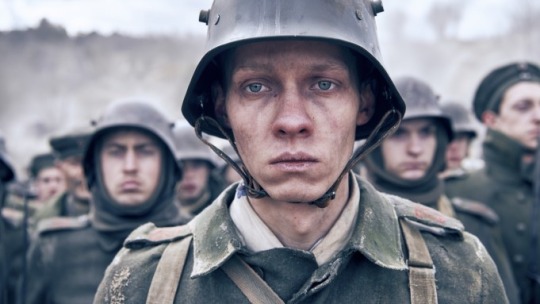
“All Quiet on the Western Front”
Bafta Best Film and Best Director.
The German language anti-war epic, directed by German filmmaker Edward Berger and based on the 1929 novel of the same name by Erich Maria Remarque, triumphed last Sunday scooping seven prizes. The film had 14 nominations on the Bafta longlist – the largest number for any film.
The film, which took home the Bafta for best film and best director, broke Italian coming-of-age drama Cinema Paradiso’s record of five for the highest number of Baftas for a foreign language film in 1988.
“All Quiet on the Western Front” The film follows Paul Bäumer (Felix Kammerer), a young German soldier who experiences the horrific reality of serving on the front line.
Remarque (born Erich Paul Remark) was born in 1898 in lower Saxony to a family of French ancestry; he enlisted in the German army at the age of 18 and headed to fight on the Western Front, where he was wounded five times, the last time seriously. Returning to Germany after the war, he changed his name back to the French spelling.
On November 10, 1928, the first instalment of All Quiet on the Western Front, Erich Maria Remarque’s acclaimed novel of World War I, appears in the German magazine Vossische Zeitung. Edward Berger’s German-language adaptation of Erich Maria Remarque’s All Quiet on the Western Front, itself a remake of the 1930 ‘Best Picture’ winner of the same name, but different from Hollywood war flicks, possesses a tone devoid of cinematic pomposity. This film gives a taste of war that lingers with nightmarish authenticity.
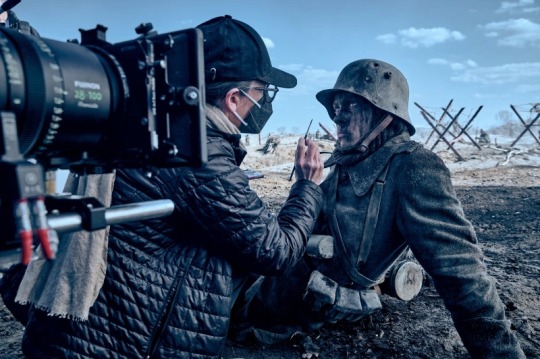
Heike Merker with Felix Kammerer as Paul Bäumer on the set of All Quiet on the Western Front, Courtesy of Netflix © 2023
Director Edward Berger's reexamination of Erich Maria Remarque's story about German conscripts hurled into the hell of bloody warfare in WWI.
The protagonist of that novel, All Quiet on the Western Front–its German title, Im Westen nichts Neues literally translates as In the West Nothing New–is Paul Bäumer, a young German soldier fighting in the trenches of World War I. The story opens in 1917 when half of Baumer’s company—many of them schoolmates from back in Germany—has been killed in battle.
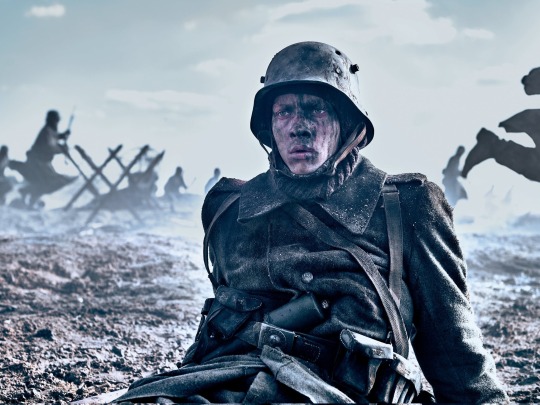
Loyal to the novel, Berger’s film tells the story of a teenage boy who enlists in the Imperial German Army alongside his school friends, buzzing with exuberance like the fresh-faced protagonists. Though, as the reality of war sets in and the constructed fantasy quickly dissipates, the friends find themselves stuck in the brutality of one of history’s most violent conflicts.
Bafta: Best original score and sound
youtube
The director Edward Berger wanted the film to be created from a German perspective. He tasked composer Volker Bertelmann with the job of creating a score he’s never done before, giving him a few insights into what he wanted for the final cut.
Bertelmann, the composer wanted to use instruments connected to that time period, so he used a refurbished harmonium passed down from his grandmother to create “Destructive” sounds for a unique score.
It's interesting to see in this interview the sequence of scenes connected either by the music.
Volker Bertelmann, is a German pianist and composer, an Academy Award-nominated in recognition of his music for “All Quiet on the Western Front”. Like the British Academy Film Awards (BAFTA), and the music line-up award.
Bafta: Best adapted screenplay
The screenwriters behind All Quiet on the Western Front are Edward Berge, Scottish Triathlete Lesley Paterson, and Ian Stokell Netflix-produced war drama was the greatest success story of this year’s awards, winning Best Film.
The Scottish athlete-turned-writer won a triathlon with a broken shoulder to afford the rights to remake All Quiet on the Western Front - as her dream film won Baftas glory. A five-time world champion triathlete – who used her prize money from the sport to help fund of Bafta film winner and Oscar candidate.

Scottish 🏴 triathlete Lesley Paterson spent 16 years working on a screen adaptation of the anti-war novel All Quiet on the Western Front
So after meeting director Edward Berger, they pitched the film in Berlin in 2020 as a German language project when Netflix commissioned it. The film’s success is “unbelievable” for a foreign-speaking film: the people are craving “Things that matter.”
Bafta: Best cinematography

From left, Moritz Klaus, Aaron Hilmer, Adrian Grünewald and Felix Kammerer in “All Quiet on the Western Front.”Credit...ReinerBajo/Netflix
The drama balances the violent tragedy of war with stunning cinematography, shot by James Friend. Filmed in the Czech Republic, Friend uses mostly large-format cameras, taking the viewer through the muddy trenches of war and intense, heart-racing battle scenes.
They filmed the scenes at the Western Front trenches at an abandoned ex-Soviet air base in the Czech Republic town of Milovice. The location was a real gem to embark on pictures, as you see in the film.

Edward Berger poses with the award for the film, not in the English language for All Quiet On The Western Front (Ian West/PA)
youtube
The next step will be revealed when the 95th Academy Awards take place in Los Angeles on Sunday 12 March.

A first edition of German novelist Erich Maria Remarque's 'Im Westen Nichts Neues',published in Berlin in 1929 in the German. Considered by many the greatest war novel of all time.
#Bafta #AllQuietOnTheWesternFront #ErichMariaRemarque #EdwardBerger #LesleyPaterson #Ian Stokell #JamesFriend #VolkerBertelmann #WWI #PaulBäumer #FelixKammerer #ImWestennichtsNeues #novel #BestFilm #BestDirector #Bestoriginal scoreandsound #Bestadaptedscreenplay #Bestcinematography #Netflix
3 notes
·
View notes
Text
Birthdays 8.17
Beer Birthdays
Joy Campbell (1948)
Jennifer Garris (1971)
Shawn Connelly (1972)
Five Favorite Birthdays
Robert De Niro; actor (1943)
Maria McKee; pop singer (1964)
Colin Moulding; English singer-songwriter and bassist (1955)
Maureen O'Hara; Irish-American actor (1920)
Boog Powell; Baltimore Orioles 1B (1941)
Eric Schlosser; writer (1959)
Famous Birthdays
Francesco Albani; Italian painter (1578)
Luther Allison; blues guitarist and singer (1939)
T. J. Anderson; composer (1928)
Wilfrid Scawen Blunt; English poet (1840)
Sam Butera; saxophonist and bandleader (1927)
Belinda Carlisle; pop musician, singer (1958)
Larry Clinton; trumpet player and bandleader (1909)
Evan S. Connell; novelist, poet, and short story writer (1924)
Davy Crockett; explorer, frontiersman (1786)
Mirella Csikis (porn star; 1994)
Mark Dinning; pop singer (1933)
Sue Draheim; fiddler and composer (1949)
Henry Drummond; Scottish writer (1851)
Larry Ellison; Oracle billionaire (1944)
Julian Fellowes; English actor (1949)
Pierre de Fermat; French mathematician (1607)
Jonathan Franzen; writer (1959)
Marcus Garvey; Jamaican organizer (1887)
Georgia Gibbs; singer (1919)
Samuel Goldwyn; film producer (1879)
Leslie Groves; general and engineer (1896)
Jon Gruden; football coach (1963)
Sib Hashian; rock drummer (1949)
Ted Hughes; English poet (1930)
Richard Hunt; Muppet performer (1951)
Colin James; pop singer, songwriter (1964)
David Koresh; cult leader (1959)
Oliver Waterman Larkin; historian (1896)
Julia Marlowe; English-American actress (1865)
Herta Müller; Romanian-German poet and author (1953)
V.S. Naipaul; Trinidadian-English writer (1932)
Laurence Overmire; poet (1957)
Duke Pearson; pianist and composer (1932)
Sean Penn; actor (1960)
Rachel Pollack; author (1945)
Francis Gary Powers; pilot (1929)
Dave "Snaker" Ray; singer-songwriter and guitarist (1943)
John Matthew Rispoli; Maltese philosopher (1582)
Larry Rivers; painter and sculptor (1923)
Kevin Rowland; English rock musician (1953)
Jean-Jacques Sempé; French cartoonist (1932)
Gene Stratton-Porter; author (1863)
Gary Talley; guitarist and singer-songwriter (1947)
Guillermo Vilas; tennis player (1952)
Donnie Wahlberg; pop singer (1969)
Mae West; actor (1893)
Monty Woolley; actor (1888)
6 notes
·
View notes
Text

I’VE BEEN WAITING FOR YOU

from within the hawkins lab: ellsie van hauten, the darling genius pianist/hawkins’ queen
the basics
full name: ellsie wren van hauten
alias(es), if any: ells, siesie, wren, van hauten, and number four
nationality: german american
age: 19
date of birth: 14 april 1966
hometown: hawkins, indiana
current location: hawkins, indiana
gender: cis female
pronouns: she/her
romantic orientation: panromantic
sexual orientation: demisexual
occupation(s): hawkins high school student/hawkins high school alumni, hawkins high student body president, musical prodigy, assistant store manager and clerk at hawkins music and record, hellfire club member, student at yale university, and leader of the hollow knights d&d club at yale
the physical appearance
faceclaim: skyler samuels
hair type: curly
hair color: blonde
eye color: blue
height: 5′6″
weight: she says it’s a secret
build: petite and slender
top ten on her personal playlist ( both canon and modern )
dream on by aerosmith
escape by metallica
kashmir by lez zeppelin
anesthesia ( pulling teeth ) by metallica
wish you were here by pink floyd
cirice by ghost
the other woman by lana del rey
goth by sidewalks and skeletons
mary on a cross by ghost
k. by cigarettes after sex
the story behind her
april 14, 1966 was both a blessing and curse to arthur and lisette van hauten, their daughter entered the world early into the morning. at an early age, ellsie was regarded as heavenly, being much like heaven and the angels hidden behind its’ gates. she grew up along side elder brother, lance, whom she throughout childhood often read lord of the rings and the hobbit with. very commonly she would watch her brother drawn or paint with their mother during their early years of childhood. her intellectual capacity made her an obvious target for what was soon to come. at a young age, she went missing, seemingly just disappeared overnight and not to be seen again. posters of her plastered the town of hawkins. the girl lived through the horrors of the hawkins lab, going through the hell that would change her life and eventually subject her to such brutality and violence never seen before. she was one of very few that was fortunate enough to escape the lab the night the massacre happened. narrowly escaping with her wits and her life. while her parents were overjoyed to have their little girl back, it was difficult for her to carry on a life that was some semblance of normal. the lab haunted her dreams and waking life, so her seeing a professional became the norm as her life carried on. anything to take her mind away from the trauma she had sustained, though it’s clear that she does not harbor any ill will towards doctor martin brenner.
one of her fondest memories is from when she was quite young. as her father’s political career started to take off, he began hosting public events where he would be able to meet members of the community. this event in question was a barbecue that happened during the summer months, when ellsie was about four or five. she recalled sitting at the playground and playing around in the sand when she was approached by a young boy. he had messy brown hair, bandages on his knees, and bruises on his legs and arms from playing outside. he introduced himself and said his name was steve. this would start a lengthy childhood friendship between she and steve harrington, whom she would often call ‘stevie’. luckily, he didn’t live too far from her, which made it easy for them to play together. steve would usually end up at her house when his parents would go out of town and they would spend their time playing out in the sun and in the creek behind her house. crafting dandelion rings for each other and causing minor mischief when they could, but usually they weren’t much to worry about. she was very happy and content with this friendship that they had, whether it was sitting inside reading a book together or her brother coming outside and hosing them down with water from the house, she was very happy to have such a close friend. the two were practically an inseparable little pair and were happy to just play and be left to their own devices, her parents trusted them not to get into any sort of trouble.
german is commonly spoken in the van hauten household, often between ellsie and her mother. lisette, her mom is from a german speaking family from switzerland. her mom was a foreign exchange student and met ellsie's father, arthur on her exchange in hawkins where arthur was born and raised. her parents were high school sweethearts and were shortly married after her mom returned to the states. ellsie grew up learning german and speaking it with her mom. her dad doesn't know the language, but he has an appreciation for it. she and her mom usually speak in german when her dad isn't around so they don't have to try and translate for him when he is around. it's hard to tell that ellsie holds any sort of traits since she doesn't have an accent like her mom. english and german are her two main languages, she someday hopes to conquer other languages like norwegian and others that hold similarities with german dialect. she also wants to visit where her mom grew up since members of her family still live in the homestead in switzerland. it would allow her to get to know her family more. her father and mother frequently take trips there, mostly to bring her aunt astrid home with them for extended periods of time.
this just goes into further detail about how and why she came to end up in the lab; at a young age, she was diagnosed with systemic lupus erythematosus, commonly known as sle or just lupus. it’s an autoimmune disease primarily characterized by inflammation, somewhat like arthritis, but it’s more severe and has many effects on the body. commonly it is diagnosed anywhere between fifteen and forty five years of age and tends to be more prominent in women. there is no cure for the disease, but there are medications around to help treat it to control the symptoms. her symptoms started to spring up when she was around six or seven years old. it started with the butterfly rash that would cover her face then the fatigue, constant fevers, inflammation, and occasional seizures followed. panic settled in on the family as they chased answers and looked for a doctor to help treat her, hopefully get her back to a life that was somewhat normal.
their search brought them to doctor martin brenner who claimed that he could treat her and possibly cure her, which was a lie given that there aren’t any known cures for the disease. however, her parents didn’t know that and were willing to hand her over in turn that he would just help their little girl. she was only six years old at this time and didn’t quite have a grasp on what was happening or know anything about her surroundings. this is how ellsie became a lab rat. fortunately for brenner, lupus can cause from brain diseases and damage, which enabled him to study it at the expense of ellsie’s freedom. she was labeled as 004 upon being properly introduced into the lab with the other subjects. now i realize that four was canonically one of the ones who bullied eleven, but for the sake of ellsie’s canon, this is not the case. none of the subjects were exactly her friends, but she often could seen with eight ( 008 ), ten ( 010 ), and eleven ( 011 ), the three that she felt the most comfortable being around. during her time at the lab, she always constantly seemed to be on edge. especially around peter/henry creel, who unbeknownst to her was 001. usually she was constantly displayed as wanting to go home, she missed her parents, her brother, and good childhood friend, steve harrington. frequently she would get in trouble for playing hide and seek and just hiding away in general. peter would typically find her, lightly reprimanding her and telling her that she would get in trouble with papa for doing it. when in reality it just provided her a small escape from this brand new life of hers.
it became increasingly clear that ellsie had became one of peter’s favorites, not that she ever got in trouble but it was clear that he favored her. he told her to hide that day, that day everything went wrong. as the massacre at the lab unfolded, she ran, initially having hidden under the bodies of those who had died. she remembered picking her way through all the death and carnage that surrounded her. when this happened she was twelve, not quite having an understanding of death and why this was happening so suddenly. while running to try find an exit and therefore means to a way out before she too perished alongside everyone else, she stumbled across one of the scientists who was in pretty rough shape and on the verge of death. due to her familiarity and trust she had forged with him, she stopped and tried her best to prevent him from dying. unlike some of the others, he was there purely to study the psychological portion of the experiments, someone who very disagreed with the ethics behind the projects happening within the sanction of the lab’s walls. he had actually been working on getting some of the kids out of the facility and back to their freedom. in passing, ellsie recalled him mentioning that he had a young son back at home and a wife that he loved dearly. this is one of the reasons why she had to try and save his life. she had been applying pressure to one of his many wounds to prevent further bleeding when he had grabbed her hand to stop her, handing her his security card. in his final moments, he requested to see a happy memory of his son and wife one last time and that she run. she fulfilled this last wish and walked him through a happy memory that showed him his wife and son. the scientist died in her arms and she immediately knew that it was a moment that she would never forget. blood on her hands to linger there for all time.
her lungs burned as she ran away from there that day, glad to be free of the hell that had kept her chained there. she reunited with her parents and spent a good while in the hospital so that she could be checked out thoroughly. this is when she started to reconnect with people that she had once been so close to. it was easy to keep the pain behind closed eyes and closed doors, leave people blind to it and unaware of what had happened and what was going on. knowing that she couldn’t just disappear and act like she wasn’t there at all. she just longed to be normal again, to be like everyone around her, but she knew that it had been far out of her reach than it ever had been before. it hurt, but she chose to just bury it and keep it where no one could see it. the lab left her with heavy trauma to recover from, often having nightmares about the events there. this stress led heavily to flare-ups related to her disease and she was shuffled around to see doctors almost constantly and she began to see a physiatrist. it would be a long road to recovery and even now she hasn’t fully recovered from everything. for a short while she was in contact with kali, but eventually she lost that contact that she had and just went on with her life as if nothing happened and she wasn’t concealing some big elaborate secret.
during elementary school, ellsie befriended nancy wheeler, barbara holland, and tabitha elwood. they were among the first of few that she came to trust as her life carried forward. later reconnecting with both of them during middle school, after she managed to escape the lab. for obvious reasons, she was insistent upon wearing long sleeved clothing to cover up the set of numbers inked on her wrist. a well kept secret. if not long sleeved clothing then her mother covered it up with concealer and foundation, anything to keep it from being readily visible by others. after an accident that paralyzed her mother from the waist down, ellsie became a dedicated caretaker of her and was usually seen aiding in pushing her mother’s wheelchair through the grocery store and various other places, often bickering with her brother about who got to do it. anything she could do to help, she did it, no need to be asked first, she just went straight ahead and did it without prior request. her love for music flourished when her parents gifted her a harp that had belonged to her late grandmother. she learned how to play the instrument and with ease. after learning to play the harp, she moved onto playing the piano which easily became her favorite instrument. beethoven along several others being her favorite composer, the first songs she learned to play were in fact written by him. all of her instrumental experience is in fact self taught, she learned how to play on her own and didn’t have any sort of teacher.
eventually she became engrossed in fantasy, reading books like the hobbit and the fellowship of the ring, it acted as a rich escapism for her along with music. her room is adorned with drawings that her brother made per her request and she’s extremely attached to them. reading books is what sparked her love for writing her own music for the instruments that she played. many of her songs are named after fictitious places or characters that were seen in the stories that she read. of course, this would later start a love for dungeons and dragons, which is something that she would keep fairly quiet, naturally holding a concern towards how she’d be perceived by other people. with her parents not really having any religious alignments, they didn’t mind at all when she picked up this brand new hobby of hers. it was even more so kept hidden when her father became the county commissioner which kind of put her in the spotlight and in the center of attention, especially when his career took off as a local politician. soon enough, ellsie was showcasing her natural talent for playing instruments to the public and community, becoming akin to a local sensation. branding her hawkins’ darling, this inevitably put a lot of pressure on her, but she played the part anyway. arthur did run for indiana state senator soon enough, which kept her dad and mom fairly absent later on and left ellsie to her own devices fairly frequently, meaning that she either ended up at the harringtons or the wheelers. so, she started to play music more intensely, playing instruments just came naturally to her and it made her happy. it was an outlet to put her emotions into regardless of the mood she was in. almost in a way it helped ground her to what was real so that she could focus on what was important.
high school took a turn for her. seeking professional help for her trauma no longer seemed to be working, this is when she started to use illegal substances such as marijuana to help her escape the pain. it was either bought by her with the use of her father’s money, that or her father bought it for her and easily covered his tracks. she joined band, partaking in both marching and pep band playing the flute, while acting as the piano accompanist for the school’s choir. ellsie sat back and watched her life slowly change around her, just trying her best to be at peace her intellect was shown through her grades and she became the girl that no one could touch, giving off dark and brooding energy. not only did she join band, but she partook in the hellfire club, playing dungeons and dragons. when everything started to happen following the disappearance of will and barbara, she found herself becoming involved and following the group to help solve everything that was happening. ellsie became notably emotionally distant as things around her began changing and barbara going missing and dying was the first of a lot that started to shove her and push her. it became increasingly clear that she had no means to cope with what was going on as the severity of her illness began to kick back up and continually interfering with her day to day life, trying hide to move with the tide when she inevitably just could not. her body was weak and she just wanted to get through high school so it could all be over. there were periods of time where she just wasn’t seen by anyone for days before she finally resurfaced. burnt out and trying to make peace with her broken pieces. a shadow of the girl that she once had been. just a girl trying her best to live with her illness and the tragedy born around her. often falling asleep in her closet on difficult nights with music playing. this however didn’t stop her from successfully running as hawkins high school student body president. the queens of hawkins, fulfilling that by being incredibly popular and just by who she was related to. she graduated the top of her class and was the valedictorian.
not sure what to expect when she got to yale, ellsie put together a dungeon and dragons campaign during the summer between her senior year of high school and her freshman year at yale university. long hours were poured into it and she buried herself in the materials to put something together that would absolutely blow everyone's socks off. it was to be a thorough and calculated endeavor on her end. upon arrival at the university's campus, she came in contact with some members, but it turned out the club didn't exactly have a leader and no one had come forward to pick up the pieces so the club was in shambles. with this campaign ready, ellsie felt it was her responsibility to help the club get off it's feet once more. the beginning was a bit rough, but soon enough the club was booming with activity and new members were joining and conveying their interest in the happenings. with the help of her players club earned it's official name 'hollow knight's club'. her first campaign lasted a semester and the second one acted as a sequel to the first. her summers are spent putting together new content and new campaigns filled with amazing surprises. so don't be surprised if she asks you to take it for a spin. she is always looking for ideas and is happy to hear input and pointers from others. especially considering that she receives letters from her fellow club members on any ideas they have on what they want to see next. she got a huge full sleeve tattoo to cover up the 004 on her wrist from her time in the lab. it was drawn out by her brother, it covers the back of her hand and goes up to her shoulder. the design consists of smaug coiling around her arm and the gaps are filled in with various scenes from the hobbit and the lord of the rings.
ellsie is a music major at yale where she participates in the school's orchestra among other things. during her study there she has been able to learn how to play some new instruments, much of her experience lays in string instruments. the instruments that she can play are the harp, piano, guitar, bass, violin, cello, flute, and clarinet, among others, but those are the most notable out all that she can play. she began collecting records and cassettes of her favorite bands and artists at a young age, she has an expansive collection that is kept in multiple places around her bedroom, both at her home in hawkins and her apartment in connecticut. more often than not, she can be seen laying in obscure positions on the floor while she writes music, commonly on her stomach or on her back in a corner of the room with her legs propped up against the walls. she likes to call it her creative genius doing it’s work, when it just helps her focus better and keeps her from pacing about the living spaces that she occupies. strawberry ice cream is a bonus during these sessions as it is her favorite, so she uses it as a reward for herself while she’s working on the task at hand. she has many books filled with hand written sheet music that she keeps and plays. this sheet music is not limited to the piano and in fact has written pieces for some of the other instruments that she is capable of playing. though a vast majority is written for the piano. ask her to write or play a song for you, she will absolutely do it with zero hesitation, she is secretly a people pleaser.
her return to hawkins during spring break was under unfortunate circumstances since her health started to decline and she knew she needed to be back home if it were to grow worse. there’s a corkboard with hospital bracelets pinned to it in her bedroom, one was added to it upon her arrival back home. it’s a sad sight, but it was kept in hopes that ellsie could overcome the worst of it and strive for the most normal of a life she could get. days are spent indoors pondering what it is she wants to complete before her life ends, especially with the severity of her illness, the likeliness of her living past thirty hangs above her head. she keeps to herself pretty heavily, not openly seeking her old friends out, content to just live in the background to see everyone live their lives. she worries a lot about people seeing how bad things are getting for her, so she tries her best to hide it. though, she is no stranger to when there is something going on. something is happening, she can feel it, as if it’s haunting her. the lab isn’t there anymore, it can’t hurt her, but wounds and memories are reopened to the past that keeps her prisoner. the memories she walks, they are not her own, who’s are they then? an open door that can’t be shut, not anymore at least. it’s open and moving back and forth in the wind. walk through the door and see what lays beyond it. “four, wake up.” there she is, sitting in her closet, blood dripping from her nose again. the lights are flickering and it’s hard to tell if the world is the waking one or if she’s trapped in a dream. the therapist’s office doesn’t feel the same anymore, it presents no familiarity. she looks out the window and suddenly she’s looking into the two way mirror in the rainbow room at the lab. “angel of death. you are a bad omen, guiding people to happiness before inevitability of death.” delusions and delirium. hopefully, one day the darkness will subside and it will be okay again.
the telekinesis is a given, something that’s kept as a secret and hidden away like it’s something that’s going to jump out and bite the next person that gets close. though she is most noted for her ability to walk through the memories of other, whether they are conscious of it or not. it functions a lot like eleven’s ability to find people, except ellsie doesn’t need to necessarily be blindfolded. all she needs is some of classical music playing and for the people around her to be quiet if any are present. when it does it’s work, she finds herself in a backroom type of setting that is just filled with hundreds and thousands of doors, usually she ends up in the general vicinity of what she wants to look at. the door is opened by her and she can go inside and walk through the memory and watch certain events happen and try to find what it is that she may be looking for. that being said, she can’t directly interfere with anything happening, she is just an observer getting to view. sometimes she does encounter a situation where a door is locked for any reasons or other, she still can find a way to open it without leaving the door permanently open so that it can’t shut. most close after she exits them and moves onto the next one. she primarily does this with her own memories, especially if she is feeling down or anything like that so she tends to visit memories that make her happy. though as of recently, she has been able to subconsciously do this while she’s sleeping. who’s memories she’s visiting? she can’t say she knows.
ellsie is very intuitive and excellent at reading people that she’s around. that being said, she definitely isn’t the kind to pry and purposely get herself into everyone else’s business. she’s quite easy to befriend and can be chatty if given the opportunity, especially if it happens to be something that she’s incredibly interested in. come be her friend and let her spoil you!
#❍❍❍❖❍❍❍ full time menace . ooc ❍❍❍❖❍❍❍#tw seizure#tw violence#tw implied kidnapping#tw implied death#tw illness#tw implied experimentation#tw blood#tw implied drug use#tw weed#❍❍❍❖❍❍❍ it's not the same as it was . ellsie van hauten ❍❍❍❖❍❍❍#❍❍❍❖❍❍❍ character introduction ❍❍❍❖❍❍❍#❍❍❍❖❍❍❍ background . biography ❍❍❍❖❍❍❍
2 notes
·
View notes